Complete Solutions to Single Correct Answer Type of chapter COULOMB LAW AND ELECTRIC FIELD of Class 12 book with complete answers and questions
| Class 12 | PHYSICS |
| Chapter | COULOMB LAW AND ELECTRIC FIELD |
| CENGAGE PHYSICS DPP | Single Correct Answer Type |
| Number Of Questions | 24 |
| Academic Year | 2023-24 |
Four charges are arranged at the corners of a square ABCD as shown in the figure. The force on the charge kept at the centre O will be:
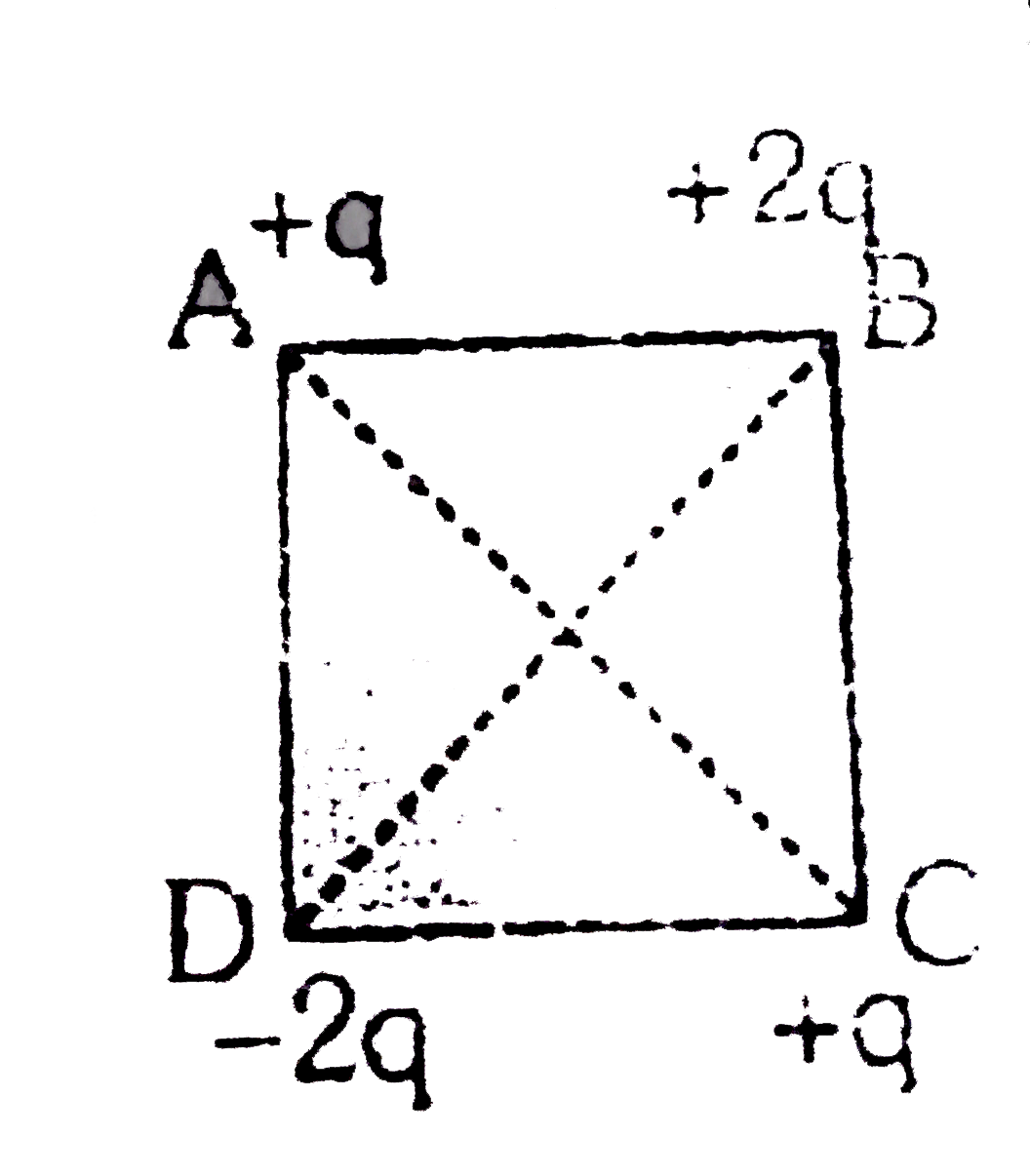
View SolutionThree charges are placed at the vertices of an equilateral trianlge of side `a` as shown in the following figure. The force experienced by the charge placed at the vertex `A` in a direction normal to `BC` is
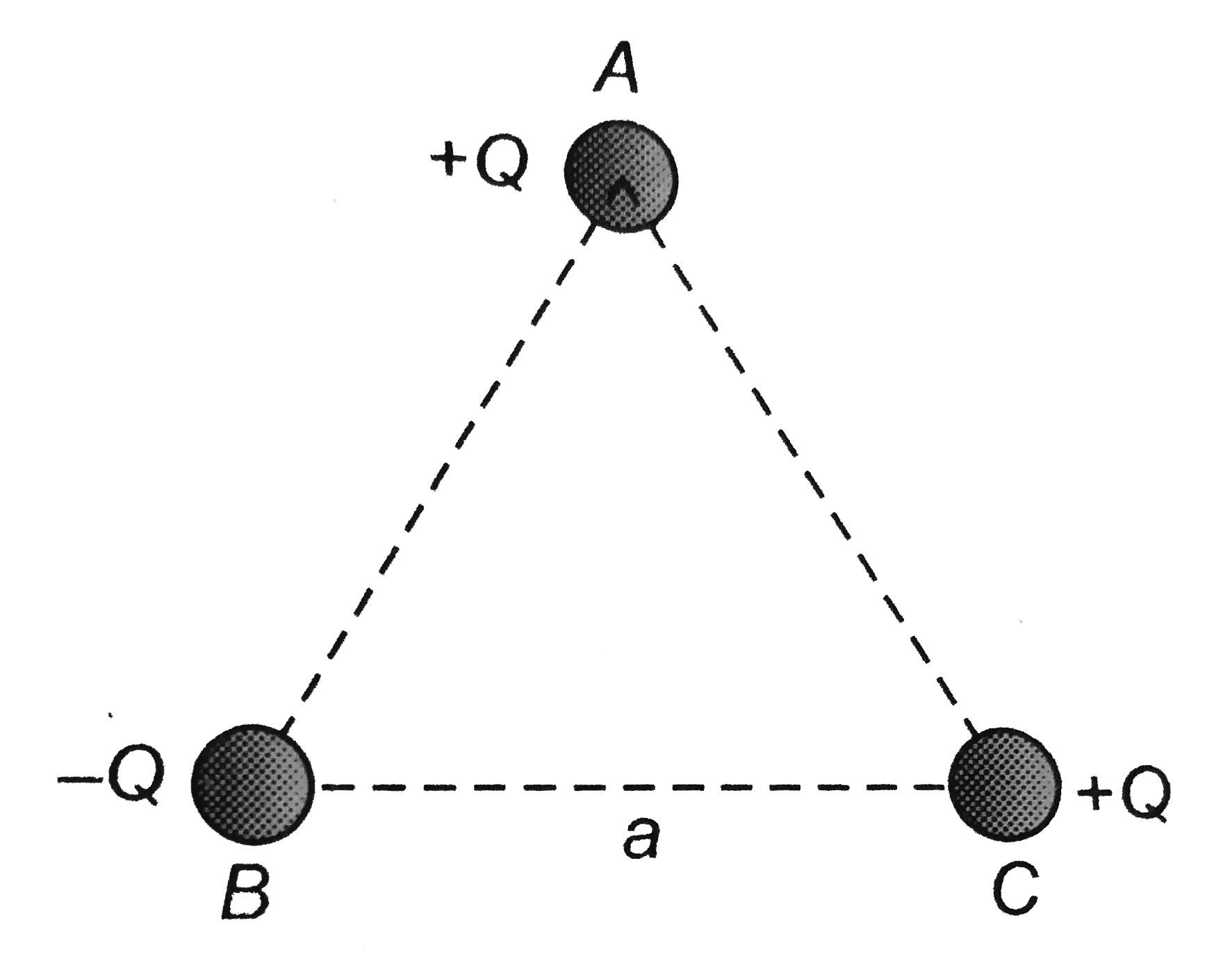
View SolutionTwo small spherical balls each carrying a charge `Q= 10 mu C` are suspended by two insulating threads of equal lengths `1 cm` each, from a point fixed in the ceiling. It is found that in equilibrium threads are sepreated by an angle `60^(@)` between them, as shown in figure. What is the tension in the threads
(Given `(1)/(4piepsilon_(0))= 9xx10^(9)Nm//C^(2)` )
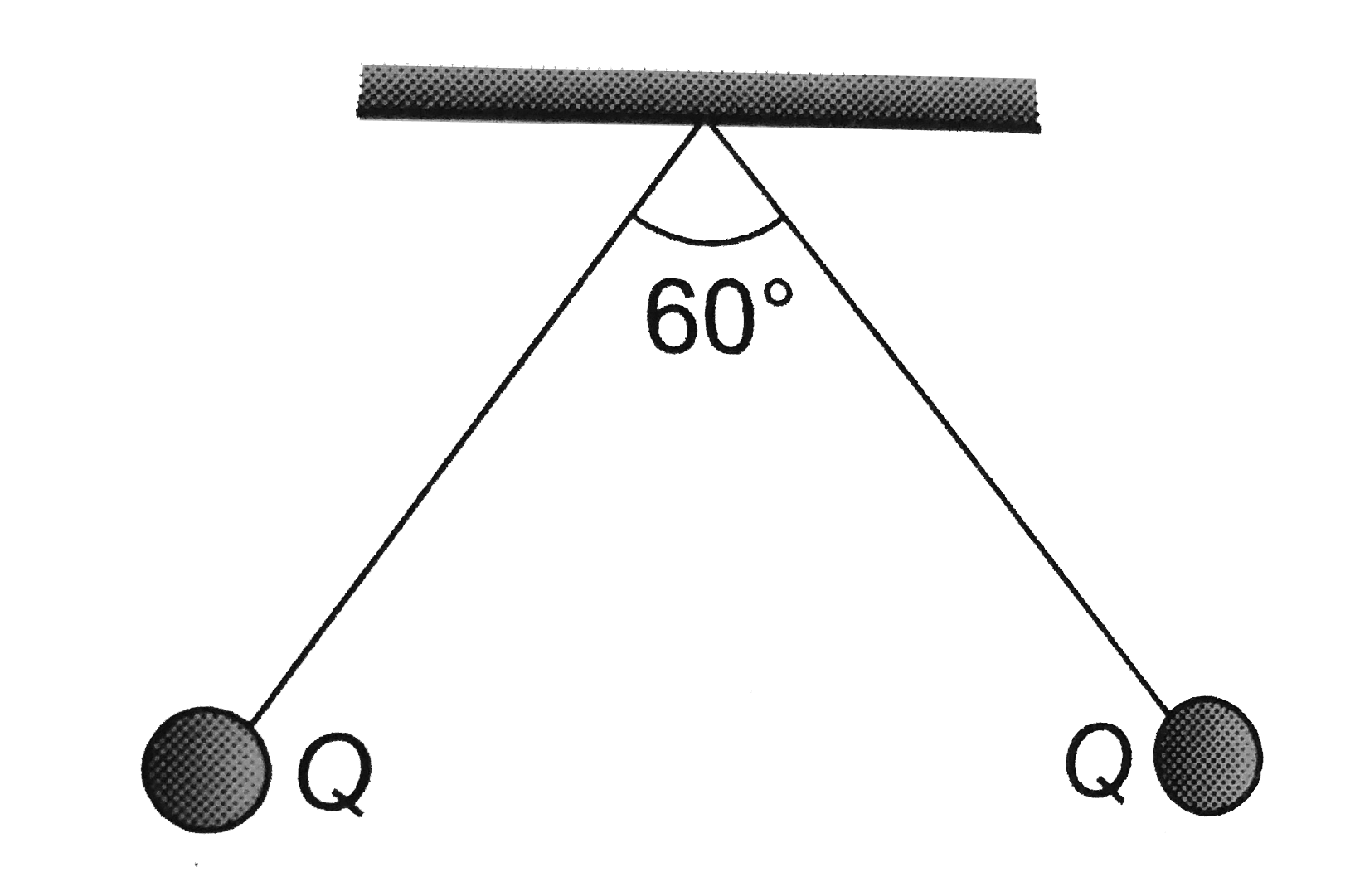
View SolutionEqual charges Q are placed at the four corners A, B, C, D of a square of length a. The magnitude of the force on the charge at B will be
View SolutionFour charges equal to `-Q` are placed at the four corners of a square and a charge q is at its centre. If the system is in equilibrium the value of q is
View SolutionThree charges `-q_(1), +q_(2)` and `-q_(3)` are placed as shown in the figure. The `x`-component of the force on `-q_(1)` is proportional to
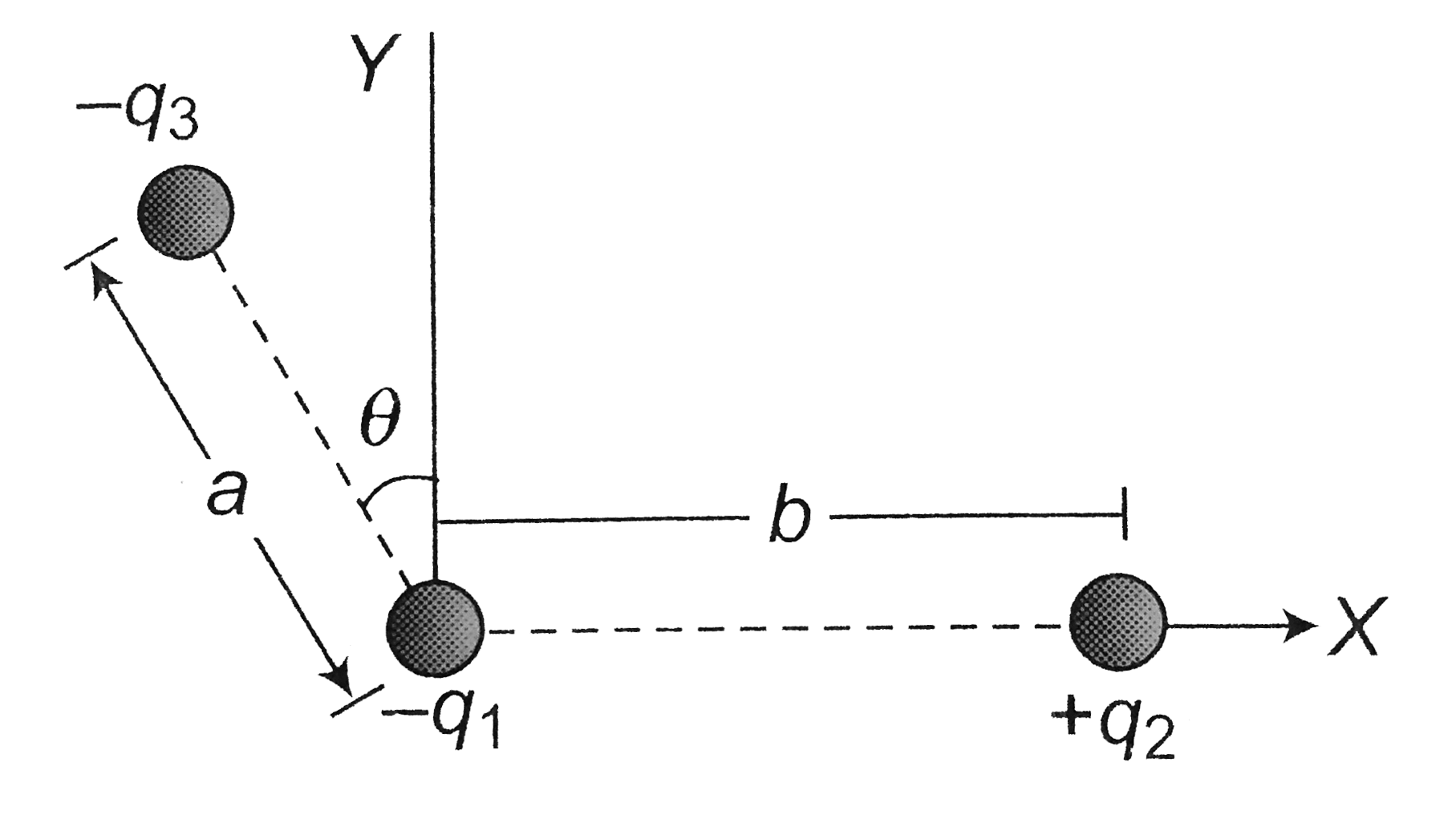
View SolutionTwo similar balloons filled with helium gas are tied to `L m` long string. A body of mass `m` is tied to another ends of the strings. The balloons float on air at distance `r`. If the amount of charge on the ballons is same then the magnitude of charge on each balloon will be
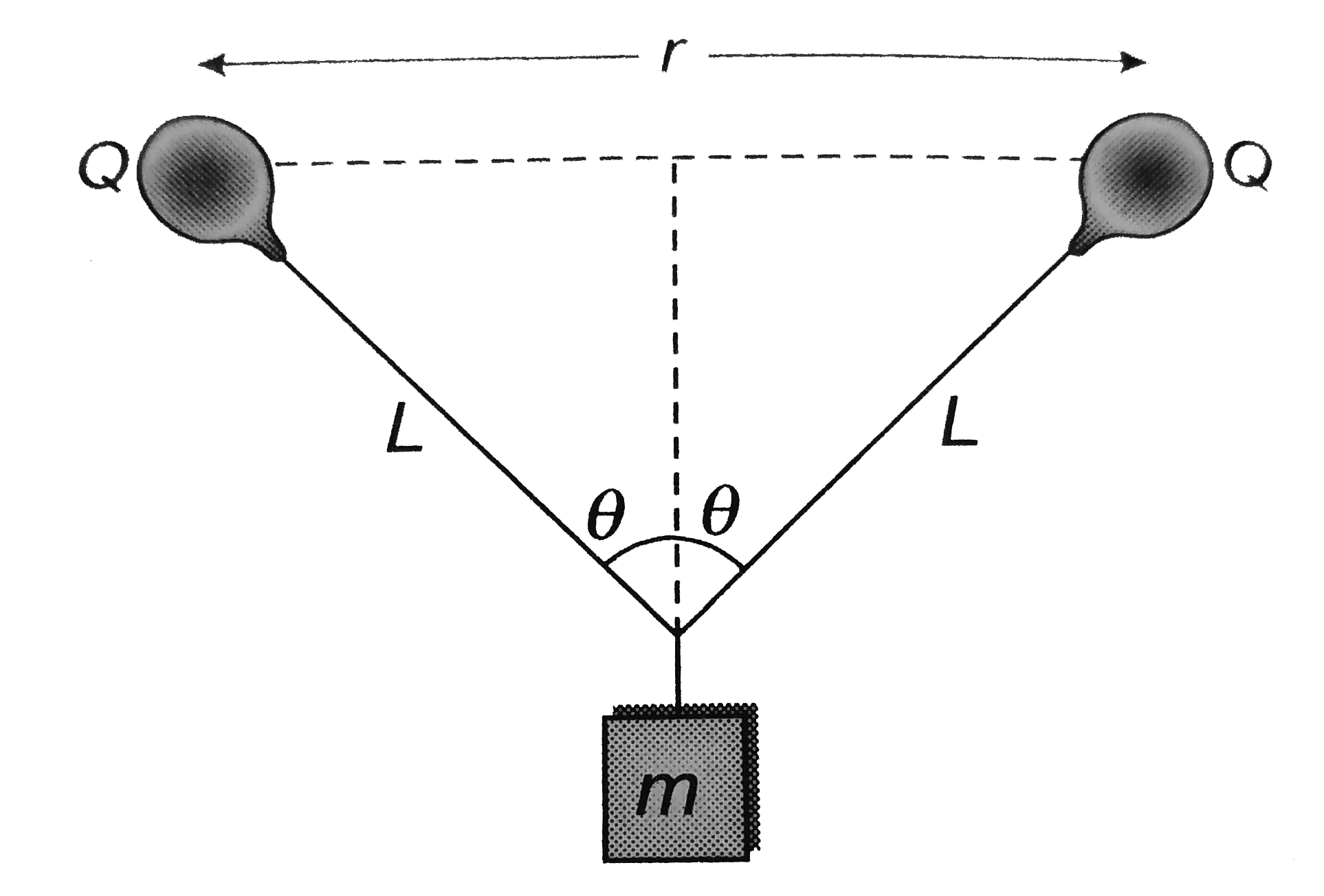
View SolutionTwo small spheres of masses `M_(1)` and `M_(2)` are suspended by weightless insulating threads of lengths `L_(1)` and `L_(2)`. The spheres carry charges `Q_(1)` and `Q_(2)`, respectively. The spheres are suspended such that they are in level with one another and the threads are inclined to the vertical at angle of `theta_(1)` and `theta_(2)` as shown. Which one of the following conditions is essential, if `theta_(1) = theta_(2)`?
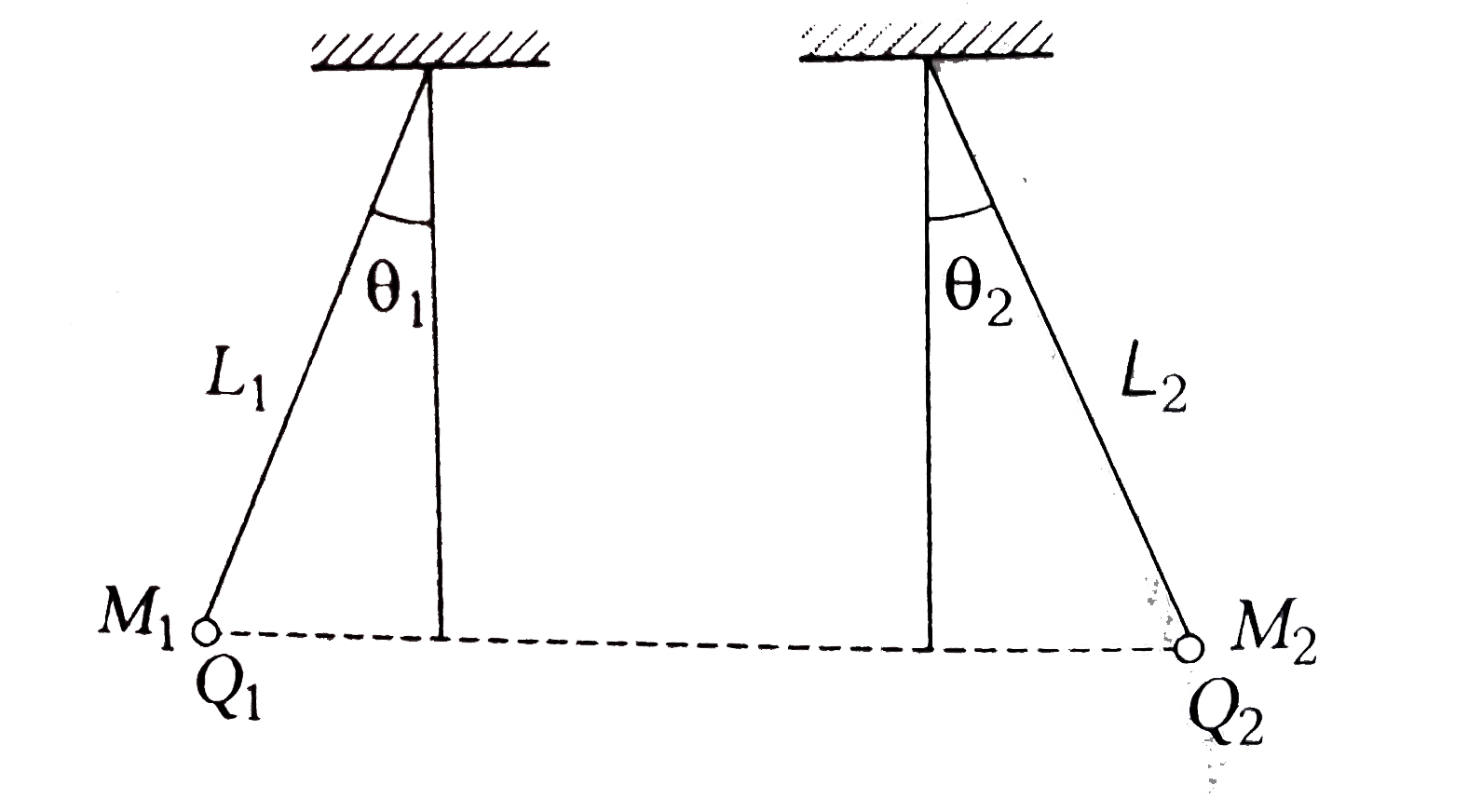
View SolutionTwo identical small balls each have a mass m and charge q. When placed in a hemispherical bowl of radius R with frictionless, nonconductive walls, the bead move, and at equilibrium the line joining the balls is horizontal and the distance between them is R (see figure). Neglect any induced charge on the hemispherical bowl. Then the charge on each bead is : (here `K=(1)/(4piepsilon_(0))`)
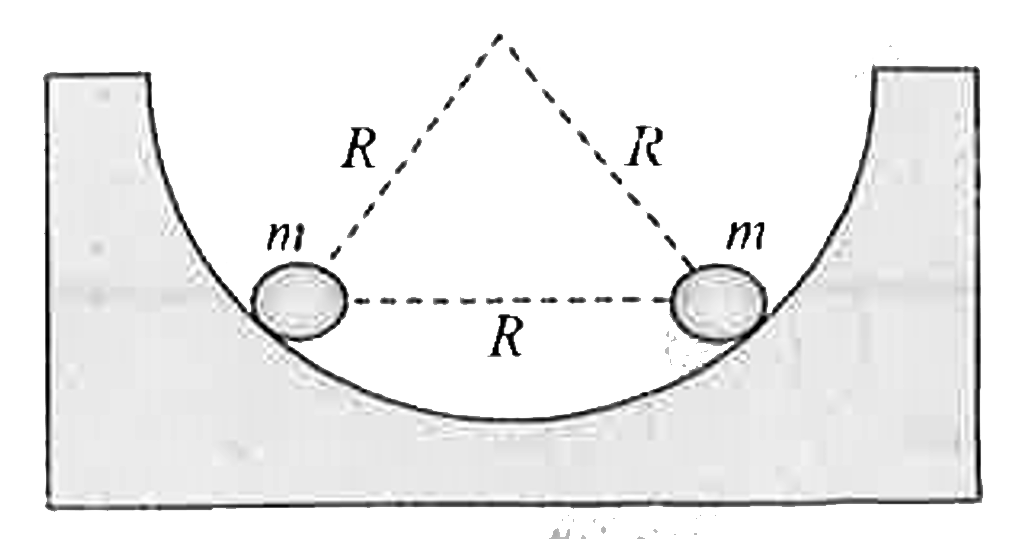
View SolutionThree similar charges `+q` are placed on `3` corners of an equilateral triangle `ABC` of side `a`. How many minimum charges should be placed on a circle of radius `a` with centre at `A` so that resultant force on the charge placed at the centre is `(q^(2))/(4pi epsilon_(0)a^(2))` along `x`-axis,
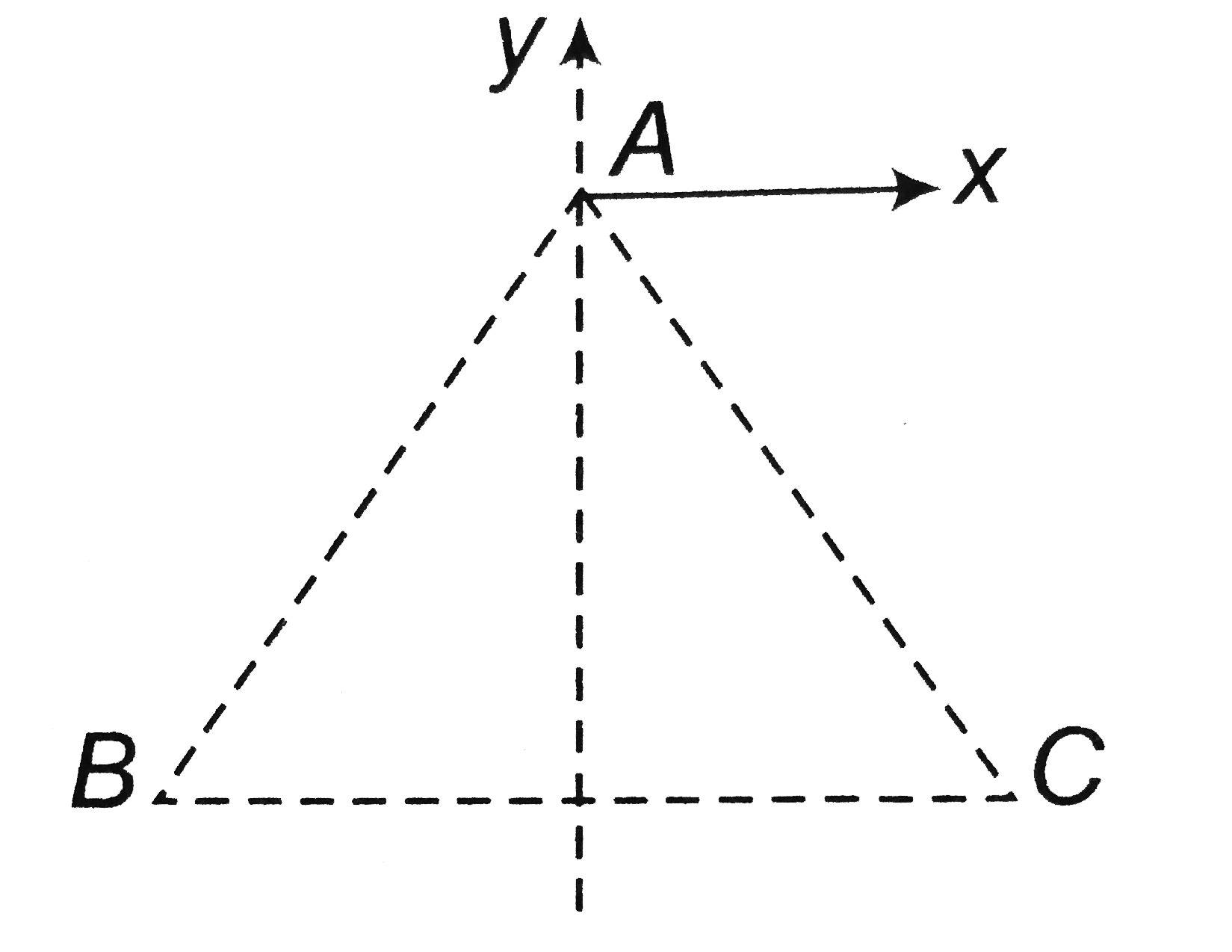
View SolutionFour similar `(+q)` are placed at origin O, B, C and D as shown. The angles are as shown. Charges at B, C and D are equidistant from O at a distance of a. The forces of repulsion experienced by charge at O due to charges at B and D along CO are equal, given by `(q^(2)sqrt(3))/(8piepsilon_(0)a^(2))`. Find the relation between `theta_(1), theta_(2)` and `theta_(3)`:
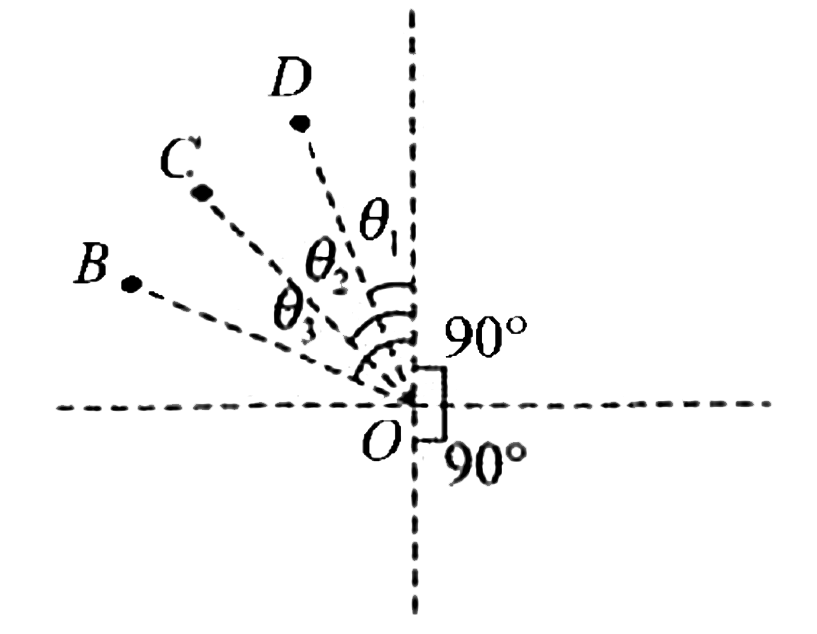
View SolutionIn the configuration as shown `+q` charge is placed at origin and Q and Q are placed at distance a and `a_(0)` respectively from origin. If net electrostatic force on charge `(+q)` is along negative y-axis and `theta=theta_(2)//2`, then `(Q//Q)` is equal to:
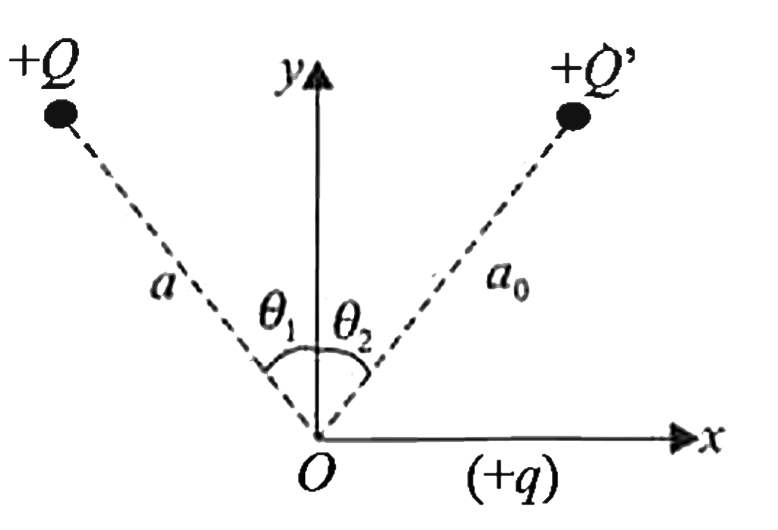
View SolutionThe insulation property of air breaks down at `E = 3 xx 10^(6) V//m`. The maximum charge that can be given to a sphere of diameter 5 m is approximately (in coluombs)
View SolutionTwo point charges `-q` and `+(q)/(2)` are situated at the origin and at the point `(a, 0, 0)` respectively. The point along the X-axis where the electric field vanishes is
View SolutionTwo point charges `+4q` and `+q` are placed at a distance `L` apart. `A` third charge `Q` is so placed that all the three charges are in equilibrium. Then location. And magnitude of the third charge will be
View SolutionThree point charges as shown are placed at the vertices of an isosceles right angled triangle. Which of the numbered vector coincides in direction with the electric field at the mid-point M of the hypotenuse?
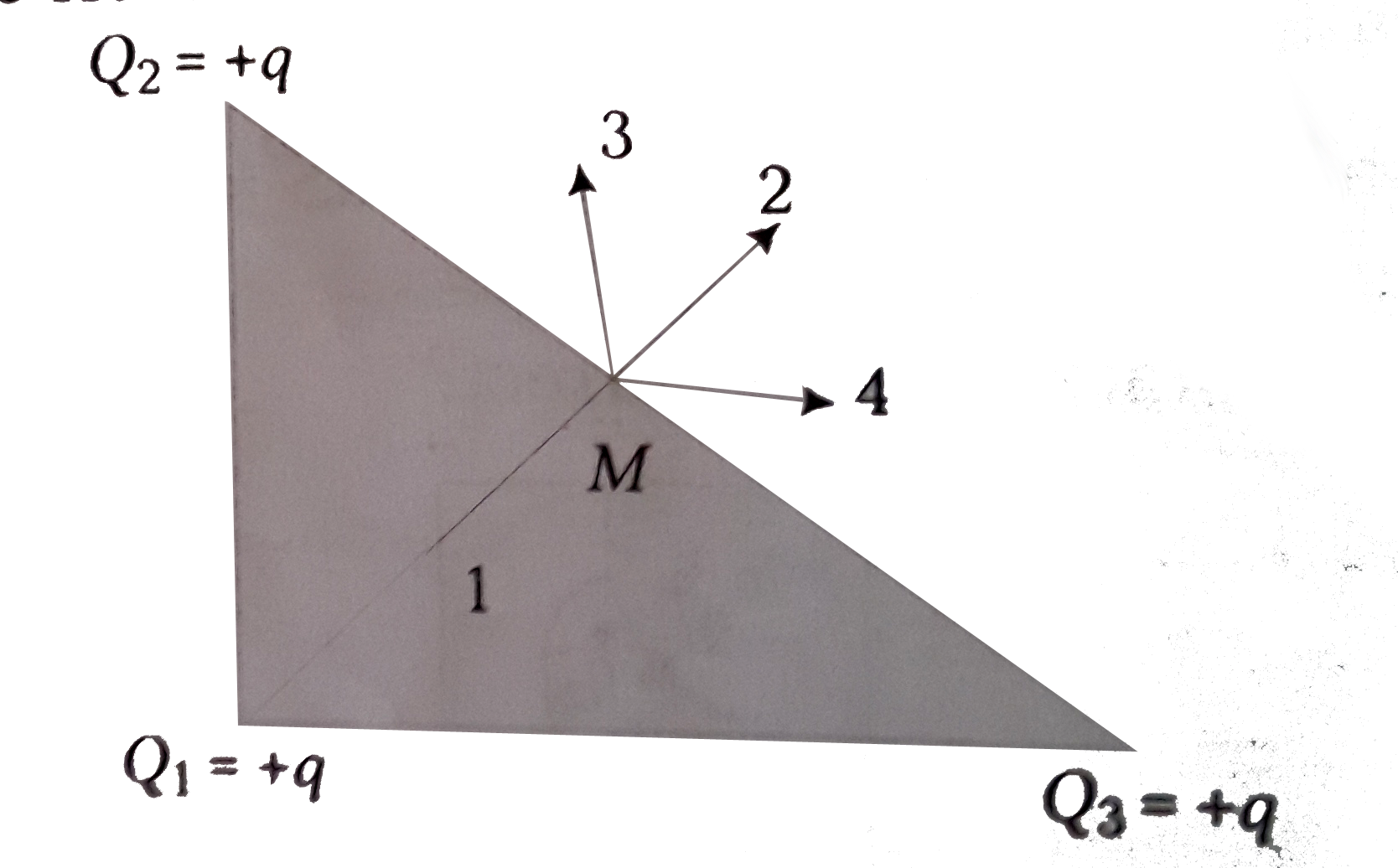
View SolutionIn the following four situations charged particles are equal distance from the origin. Arrange them the magnitude of the net electric field at origin greatest first
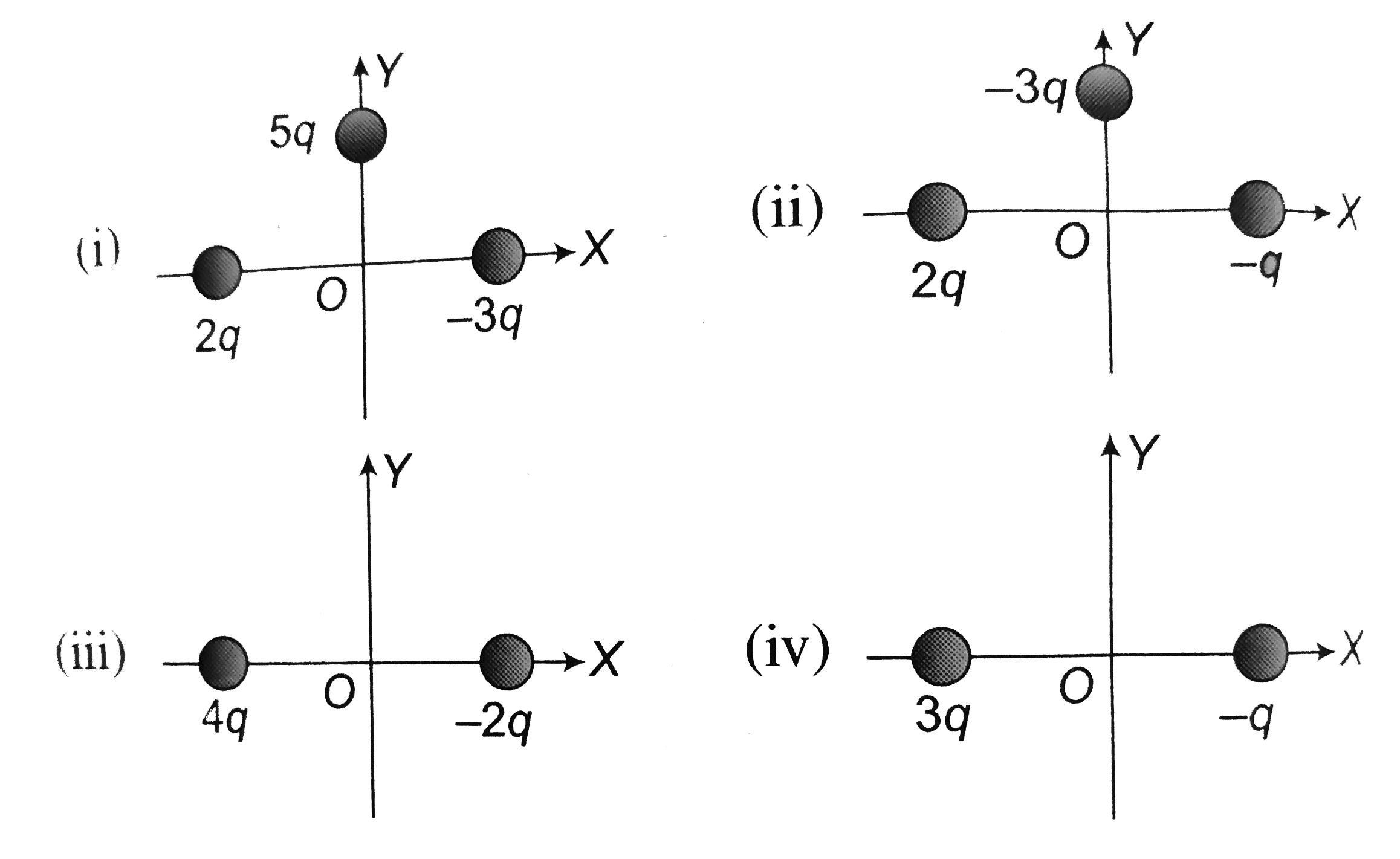
View SolutionFive point charge each having magnitudes `q` are placed at the corner of hexagon as shown in figure. Net electric field at the centre `'O'` is `vec(E )`. To get net electric field at `'O'` be `6 vec(E )`, charge placed on the remaining sixth corner should be
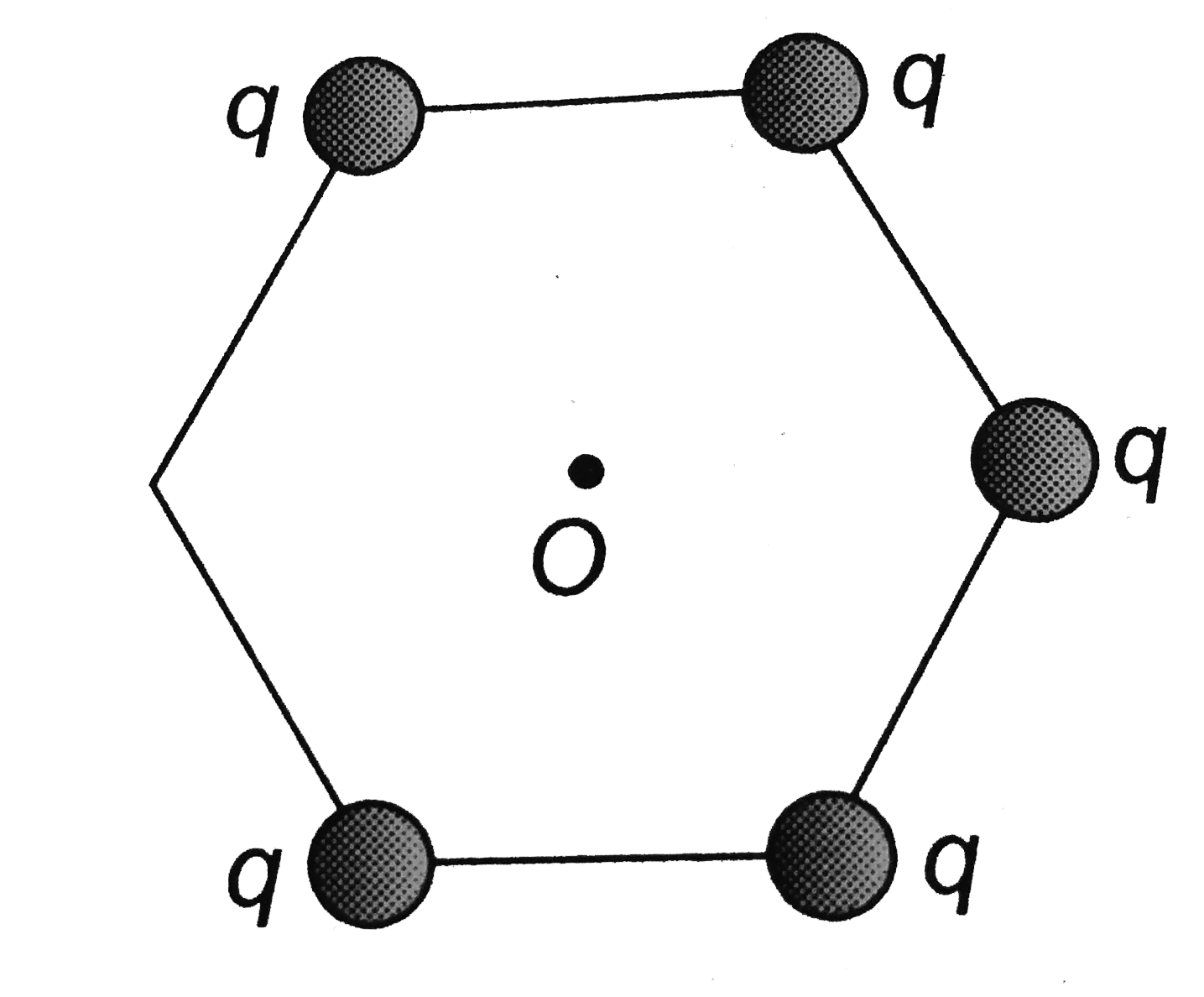
View SolutionFigure below show regular hexagons, with charges at the vertices. In which of the following cases the elecetric field at the centre is not zero ?

View SolutionCharges `q, 2q,3q` and `4q` are placed at the corners `A,B,C` and `D` of a square as shown in the following figure. The directon of electric field at the centre of the square is along

View SolutionInfinite charges of magnitude `q` each are lying at `x = 1, 2, 4, 8`,... Metre on X-axis. The value of intensity of electric field at point `x = 0` due to these charges will be
View SolutionTwo semicircular rings lying in same plane, of uniform linear charge density `lambda` have radius r and 2r. They are joined using two straight uniformly charged wires of linear charge density `lambda` and length r as shown in figure. The magnitude of electric field at common centre of semi circular rings is -
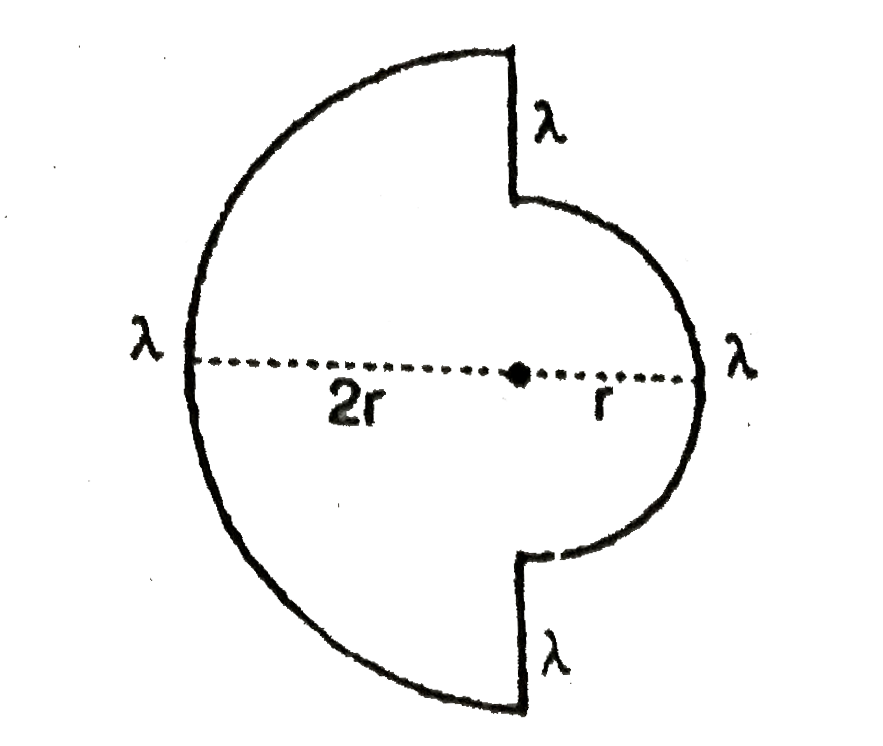
View SolutionTwo concentric rings, one of radius `R` and total charge `+Q` and second of radius `2R` and total charge `-sqrt(8)Q`, lie in `x-y` plane (i.e., `z=0`plane). The common centre of rings lies at origin and the common axis coincides with `z`-axis. The charge is uniformly distributed on both rings.
At what distance from origin is the net electric field on `z`-axis zero?
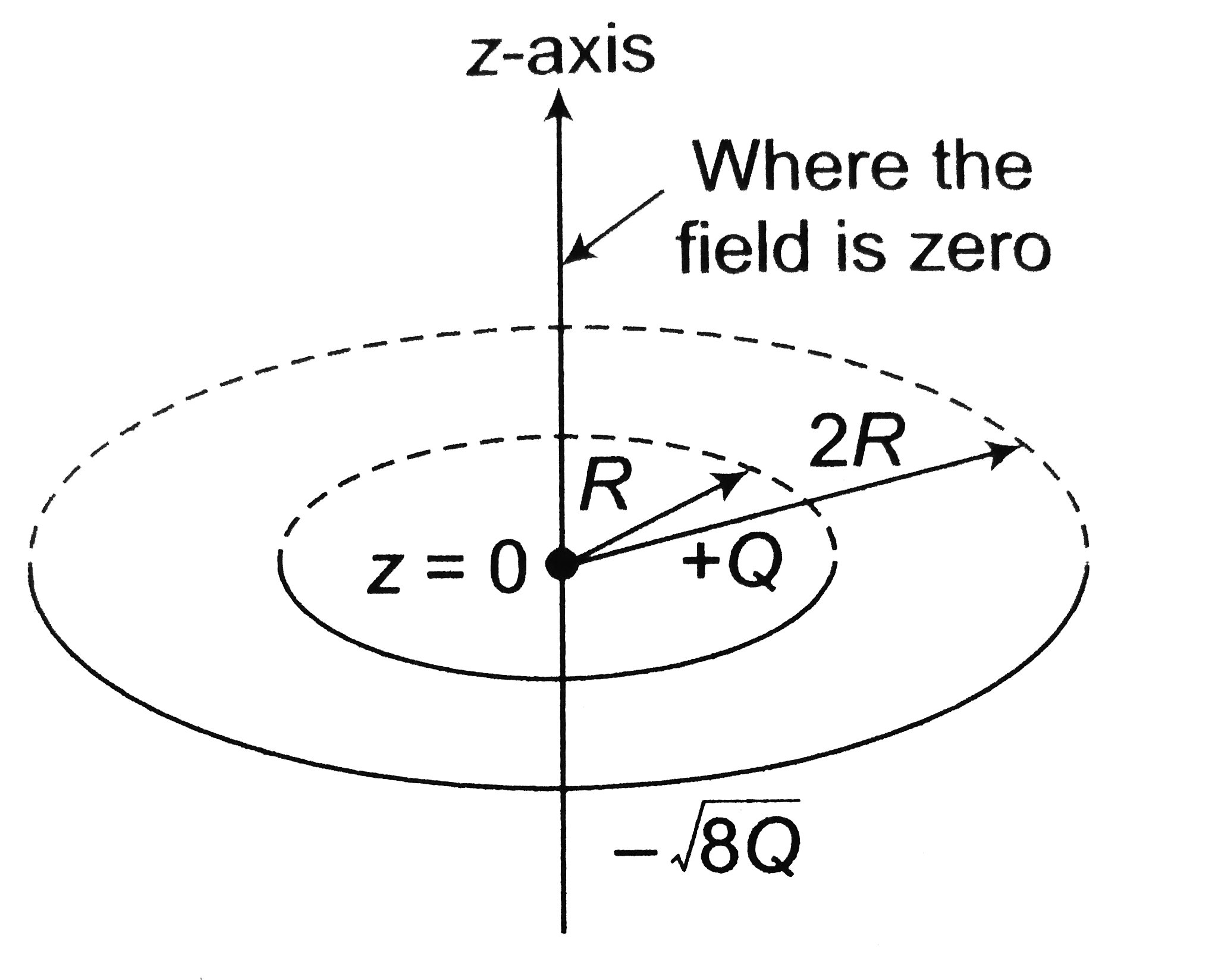
View SolutionAn infinitely long wire is kept along `z`-axis from `z= oo` to `z=oo`, having uniform linear cahrges density `(10)/(9) nC//m`. The electric field at point `(6 cm,8cm,10 cm)` will be
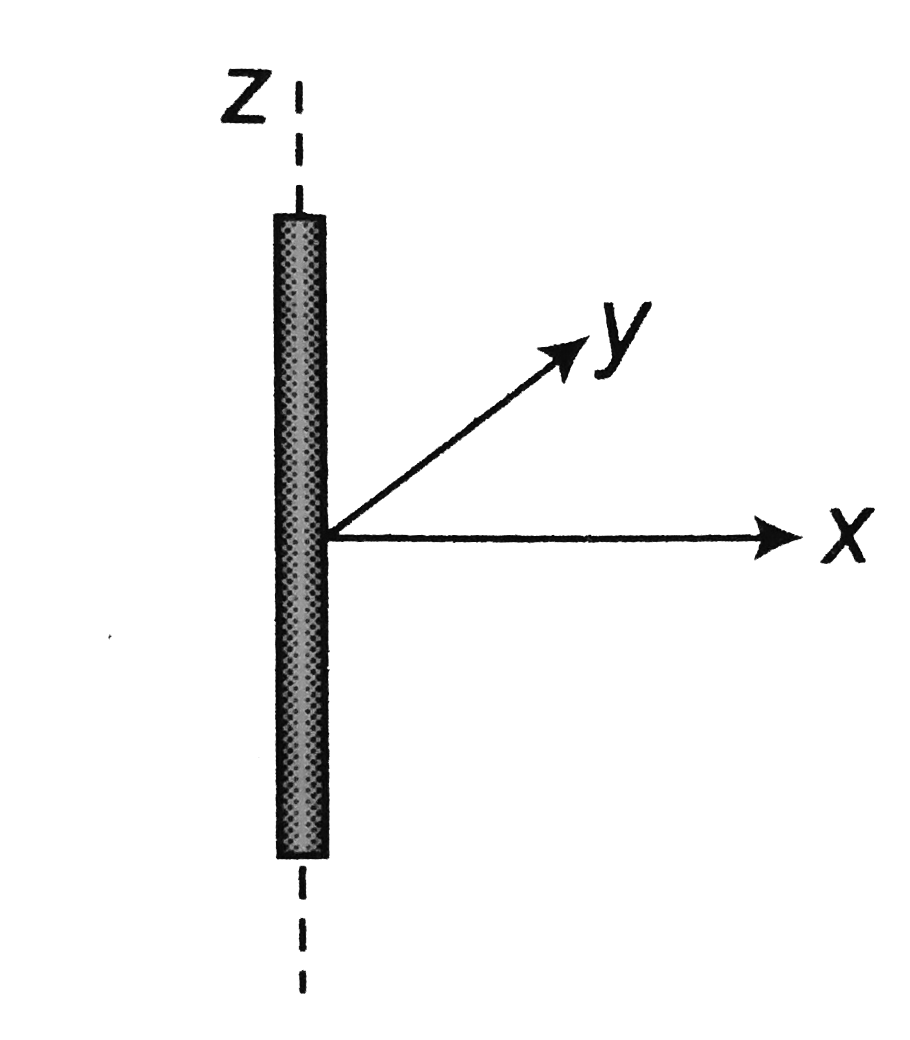
View Solution
Single Correct Answer Type questions and complete solutions for chapter COULOMB LAW AND ELECTRIC FIELD of CENGAGE PHYSICS (ENGLISH) of Class 12